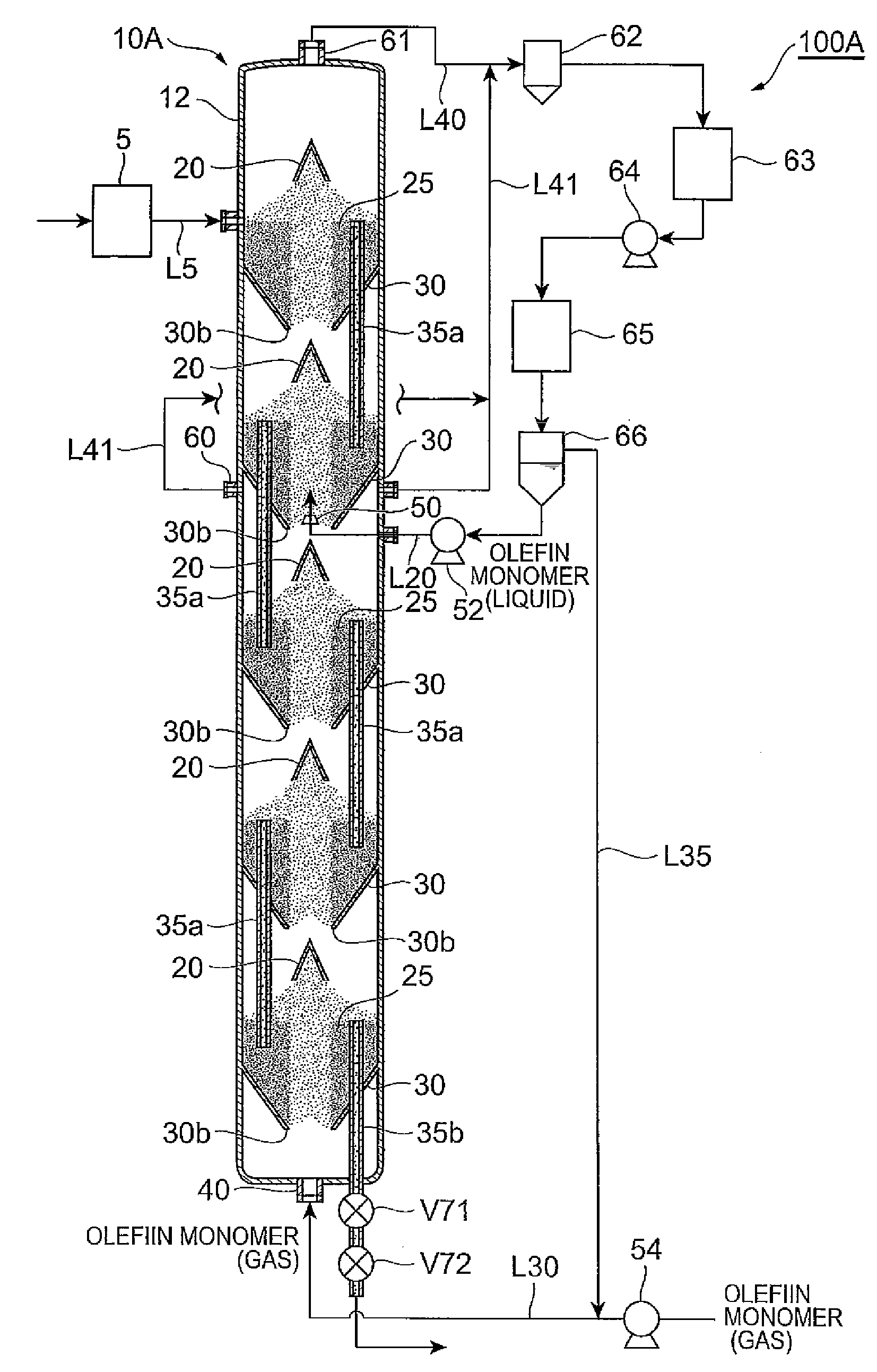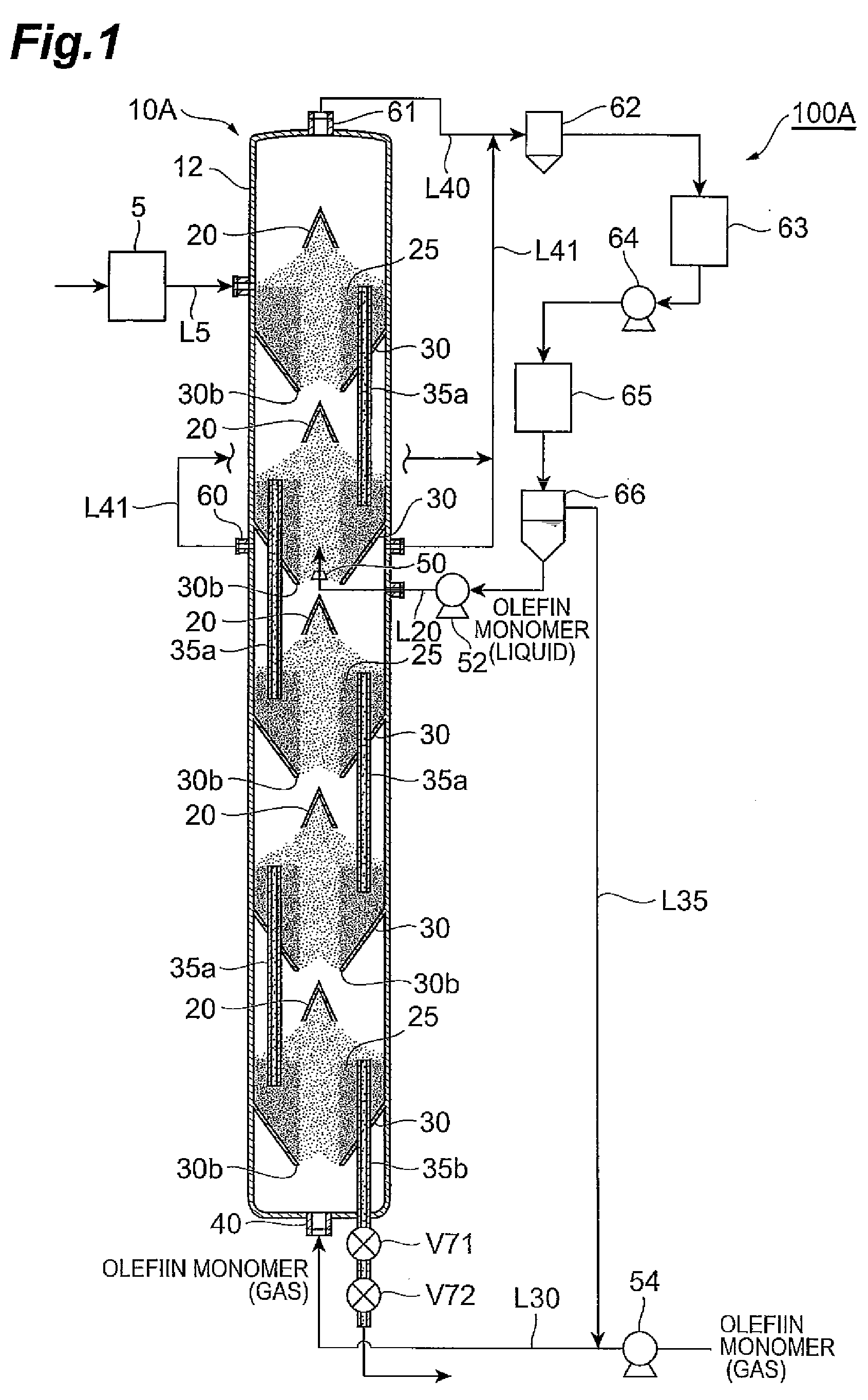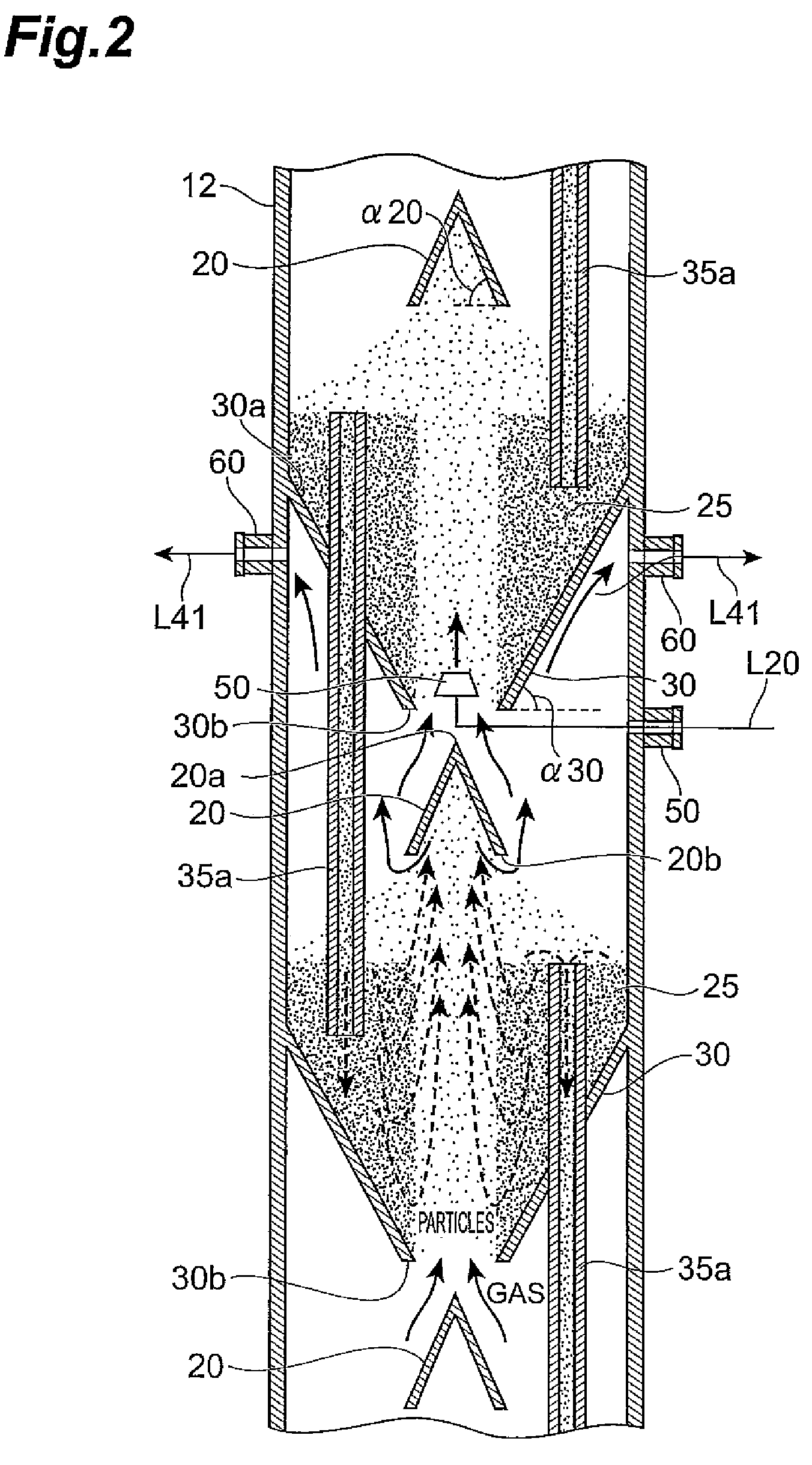Olefin polymerization reactor, polyolefin production system, and polyolefin production process
a technology of polymerization reactor and production system, applied in chemical/physical/physical-chemical stationary reactors, chemical/physical/physical-chemical processes, chemistry apparatus and processes, etc., can solve the problems of large reactor height, large amount of energy required, and complicated construction, and achieve excellent structural uniformity
- Summary
- Abstract
- Description
- Claims
- Application Information
AI Technical Summary
Benefits of technology
Problems solved by technology
Method used
Image
Examples
example 1
[0148]A cylindrical cold model reactor made of transparent polyvinyl chloride and capable of forming two spouted beds inside the cylinder was furnished to investigate the residence time distribution in an olefin polymerization reactor according to the present invention. This unit had two tubular baffles of inverted conical shape with a gas inlet orifice therein, each of which was paired with a conical deflector, disposed vertically and coaxially within the cylinder.
[0149]The cylindrical cold model reactor had an inside diameter dB of 500 mm, and the gas inlet orifice at the bottom end of each tubular baffle had a diameter dA of 100 mm. Accordingly, in the present example, the ratio dA / dB between the gas inlet orifice diameter dA and the cylinder inside diameter dB was 0.2.
[0150]The angle of inclination between the inside surfaces of the tubular baffles of inverted conical shape and the horizontal and the angle of inclination between the outside surfaces of the deflectors and the hor...
examples 2 to 9
[0155]Examples 2 to 9 below were carried out to investigate the relationship between the stability of a spouted bed formed in a reaction zone and the shape of the tubular baffle.
example 2
[0156]A cylindrical cold model reactor made of transparent polyvinyl chloride and capable of forming a single spouted bed inside the cylinder was furnished for use. This reactor had, disposed within the cylinder, a single tubular baffle with an inverted conical shape having a gas inlet orifice and, paired with the baffle, a single deflector with a conical shape.
[0157]The cylindrical cold model unit had an inside diameter dB of 500 mm, and the gas inlet orifice at the bottom end of the tubular baffle had a diameter dA of 100 mm. Accordingly, in the present example, the ratio dA / dB between the gas inlet orifice diameter dA and the cylinder inside diameter dB was 0.2.
[0158]The angle of inclination between the inside surface of the tubular baffle having an inverted conical shape and the horizontal and the angle of inclination between the outside surface of the deflector and the horizontal were each 65°. The conical deflector had an inside diameter at the bottom end of 300 mm, and was ho...
PUM
 Login to View More
Login to View More Abstract
Description
Claims
Application Information
 Login to View More
Login to View More - R&D
- Intellectual Property
- Life Sciences
- Materials
- Tech Scout
- Unparalleled Data Quality
- Higher Quality Content
- 60% Fewer Hallucinations
Browse by: Latest US Patents, China's latest patents, Technical Efficacy Thesaurus, Application Domain, Technology Topic, Popular Technical Reports.
© 2025 PatSnap. All rights reserved.Legal|Privacy policy|Modern Slavery Act Transparency Statement|Sitemap|About US| Contact US: help@patsnap.com



